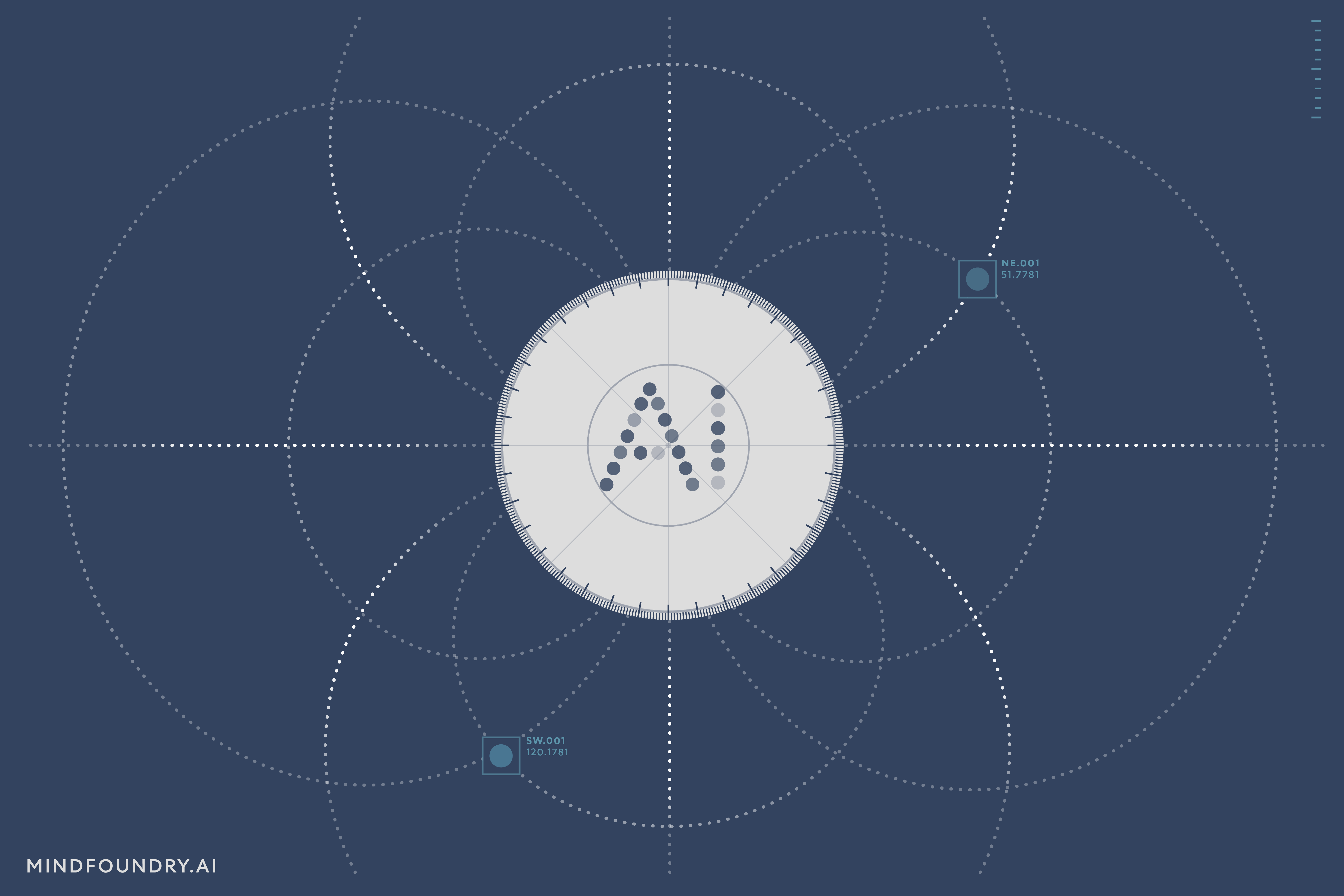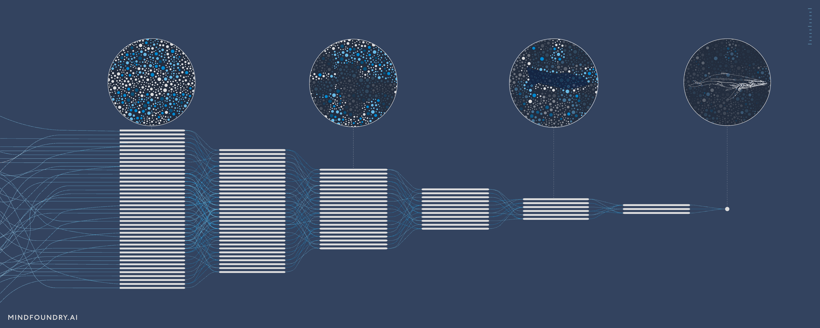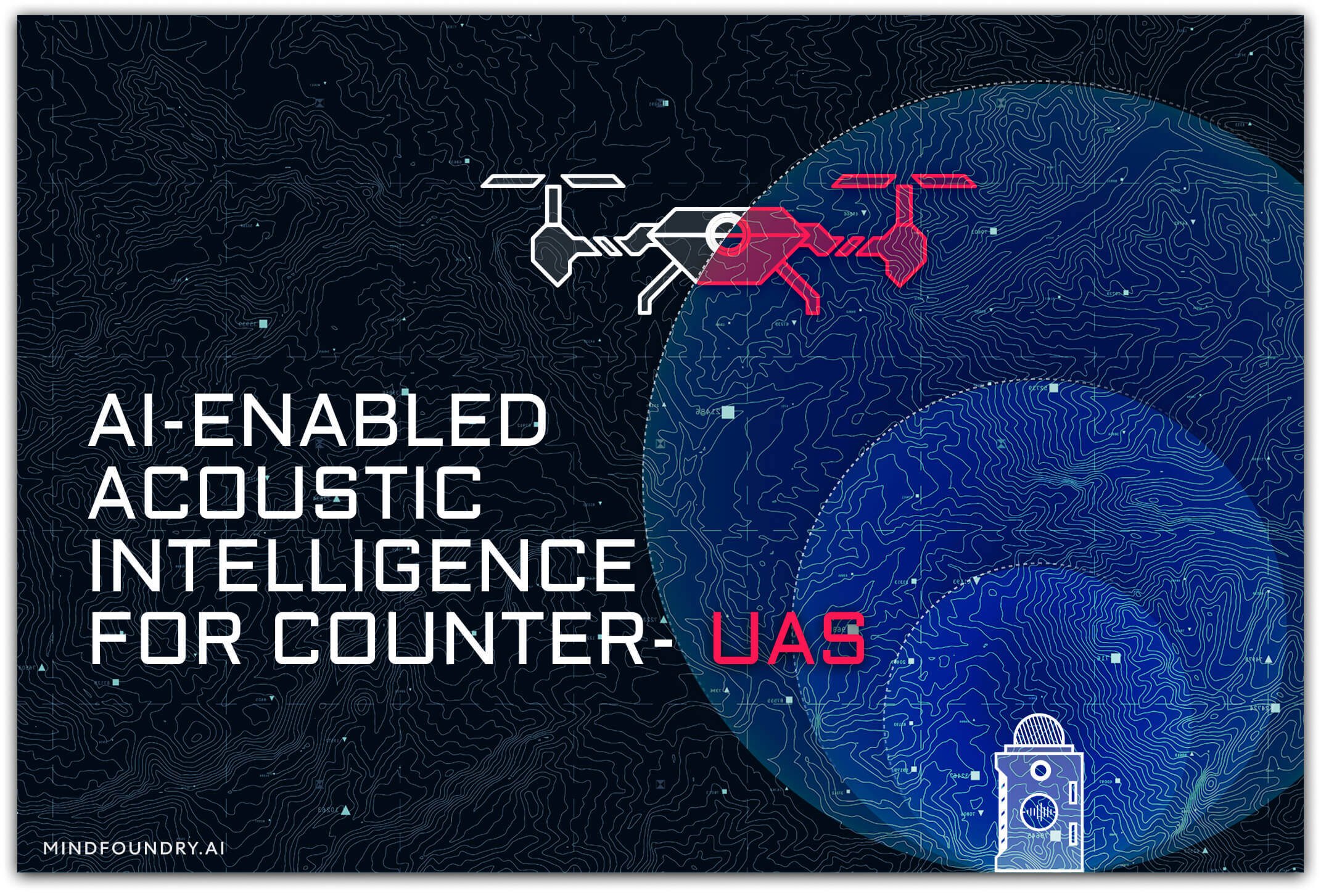AI-enabled Acoustic Intelligence for Counter-UAS
Unmanned Aircraft Systems (UAS) are now a staple of modern warfare, now responsible for 60% of targets destroyed in the Ukraine-Russia war....
4 min read
 Al Bowman
:
Mar 7, 2023 11:00:00 AM
Al Bowman
:
Mar 7, 2023 11:00:00 AM

Artificial Intelligence is already being used to solve problems in the Defence sector. But if AI is only seen as an opportunity to practice innovation, then the development of critical applications won’t progress fast enough.
The Defence industry faces a multitude of problems that require solving, many of which are clearly identifiable and well-documented. Some are equally prevalent but are poorly articulated and insufficiently understood. However, there is one common issue in particular that shines through; although we possess the necessary hardware to collect huge volumes of data, we are hamstrung by severe limitations in our capacity to process and capitalise on it.
Data is an abundant and essential resource in Defence, whether it’s geospatial data to monitor changes in an operational environment or sonar data to help protect critical undersea infrastructure. At any given moment, intricate and constantly evolving hardware systems are collecting this data in volumes that humans can scarcely comprehend, let alone physically process. Currently, strategically valuable information is getting lost in the noise because the data isn’t being processed and presented intuitively for humans to understand and act on.
AI is, in many ways, the perfect tool to help us solve this data problem. We hear all the time about the exciting potential of AI as a revolutionary technology, but fundamentally what it does is actually often quite mundane and repetitive. You might even call it boring. And this is exactly why it’s so important. AI ingests, processes, and makes recommendations based on data at a speed and scale that is simply beyond human beings. What is truly exciting about AI is not the opportunity for innovation but the nature and scale of the problems that it can solve.
When AI is combined with domain expertise and carefully calibrated to an operational problem, it can swiftly process data to amplify signals and reduce noise. In other words, it makes it easier to find the needle in the haystack by dramatically reducing the size of the haystack itself. It also provides a much-needed reduction in the cognitive burden on operators and dramatically increases the likelihood of them identifying risks and threats as a result.

Let’s take sonar as an example... AI-enabled signal processing can be used to integrate high volumes of complex and raw data from multiple underwater sensors, deconstruct them to understand the fundamental components, and then reconstruct them as human interpretable outputs. The current alternatives are either legions of human operators visually assessing each of these signals in the hope of spotting anomalies or, more likely, simply accepting the risk of overburdening human operators.
These simply aren’t viable options with the amount of data we’re talking about; signals that are incredibly abundant and complex from constantly changing environments that are full of noise. When you factor in the extraordinary physical and mental pressures that operators are often under whilst making signal assessments in Defence, then entrusting these individuals to consistently and effectively process multi-sensor data without technological assistance is more than just practically unfeasible. It’s fundamentally unattainable.
Fortunately, where human intelligence struggles, computer intelligence thrives. Not only can it process all this data, but the more data it gets, the better it performs. This means that problems that were previously considered unsolvable are now within our grasp thanks to this new data-processing power. This is what we should think of when we think about AI and Machine Learning - not just as a chance to innovate and experiment, but as a clear path towards better performance that is aligned with operational, tactical, and strategic goals.
Machine Learning Is Not Just Software Development
When we talk about Machine Learning, it’s essential to remember that we are referring to a specific discipline, not just an extension of coding or software engineering. As a result, the community that understands how to build effective models is limited. As for organisations that understand how to then integrate these models into a range of environments that are constrained in terms of size, weight, and power, that number is even smaller. Organisations that can build hardware to a high standard, in addition to the above, are non-existent.
AI, Machine Learning, software engineering, and signal processing all sit on a continuous spectrum where there is often significant technical overlap between disciplines. This makes them an attractive proposition for companies developing software to kick off ‘AI projects’ that leverage their in-house capabilities in an attempt to explore exciting and promising new technologies as an extension of existing offerings.
In truth, however, this idea is a fallacy. The true potential of these new technologies can only be realised through a targeted, concerted, and singular effort, which avoids the distraction of wider priorities, and allows increased impact to be delivered through a concentrated critical mass of technical expertise.
From a position of integration and continuous delivery, simply over-resourcing and investing heavily won’t automatically pay dividends - just throwing money at the problem won’t get you closer to solving it. To tackle complex and rapidly evolving challenges, you need equally nuanced and dynamic solutions that get to the very heart of the issue.
AI and Machine Learning Are Not Just Opportunities to Innovate
To view them as such would be a mistake. The danger here is that, when viewed as an innovation opportunity, the technology becomes seen as some kind of experimental dark art that only those positioned at the heart of innovation can truly understand. In order to cross the gap between development and deployment, we need to start understanding the technology as a multi-purpose tool capable of being broadly employed to solve a range of problems across various environments.
If this doesn’t happen, AI and Machine Learning will only be developed at the pace at which internal experts can assimilate problems and assign resources to support solving them. In this scenario, solutions could be mature and highly efficient in theory but quite the opposite in reality. Oftentimes, innovation projects will also be slow to solve problems due to the intense competition for a pot of limited resources. When the margins are tight and time is a factor, you need to be able to tackle these problems quickly and effectively.
An alternative to siloing AI projects to the innovation team is to try to distribute Machine Learning expertise throughout an entire organisation by incorporating it in some form into every solution. However, this is equally problematic as it merely fosters a lowest common denominator approach to Machine Learning; the solution is only developed to the level of the person working on it. If there is no depth to organisational knowledge, then the solutions are, at best, basic and, at worst, unusable.
So, what is the solution?
The Need for Shared Expertise and Collaboration
For us at Mind Foundry, the stakes in Defence and National Security are simply too high for us not to share expertise. There is no ‘one size fits all’ solution for the problems we face, and the domain’s inherent complexity makes it impossible for a single organisation to be an expert across the entire solution. The more challenging the problem, the greater the need for genuine, focused expertise. Only effective collaboration between experts enables each contributor to leverage and amplify the other’s existing capabilities and accelerate AI's operational impact.
Your goal shouldn’t be simply ‘to adopt AI’. Your goal should be to identify exactly what problems you need to solve and then proactively collaborate with relevant stakeholders to establish where and how AI could help to overcome these obstacles. If we can successfully bring together the expertise of world-leading hardware manufacturers with leaders in the fields of data and software engineering, then the output will be far greater than the sum of its parts. AI may be a technology of the future, but the time to start using it to solve real-world problems is now.
Find out more about our work in Defence and National Security.

Unmanned Aircraft Systems (UAS) are now a staple of modern warfare, now responsible for 60% of targets destroyed in the Ukraine-Russia war....

In Defence and National Security, mission-critical data often emerges from a multitude of different sensor types. With AI, we can bring this...

When used by malicious actors or without considerations for transparency and responsibility, AI poses significant risks. Mind Foundry is working with...